Our volunteer Louise delves into the history and significant of this yellow summer flower
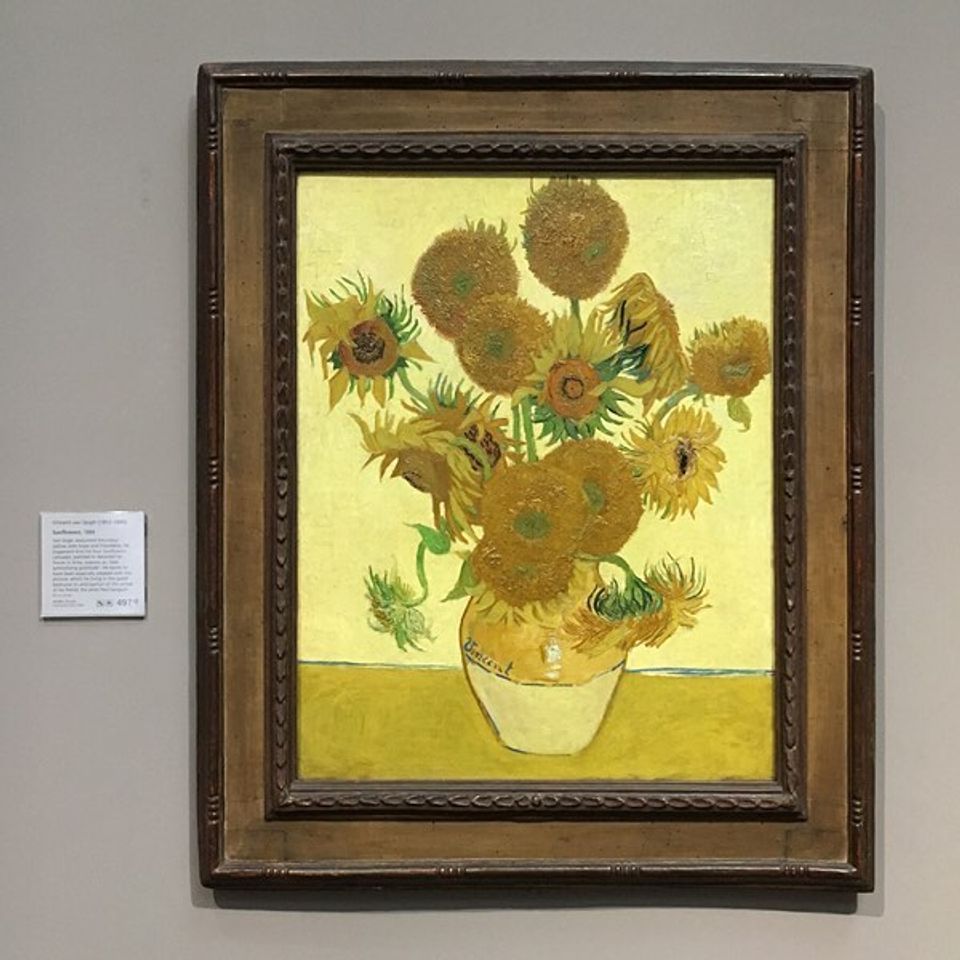
‘The Sunflowers’ by Van Gogh (1888)
The showy sunflower has long been a favourite subject of artists across the world, probably most famously featuring in instantly recognisable Van Gogh works and it remains a firm design icon to this day. Introduced from America in the mid 16th century, this glorious bloom has been seen as a symbol of God and kingship by those who were captivated by its beauty and its ability to sense and seek out the sun’s rays. The Dutch Masters would include sunflowers in their compositions to showcase the exquisite nature of the spiraled seed heads and radiating flame-like petals but their inclusion also highlighted the transience of all life, as seen in ‘Boy Blowing Bubbles’. Sunflowers lost favour somewhat during the 18th century, being banned from borders and flowerbeds across the land.
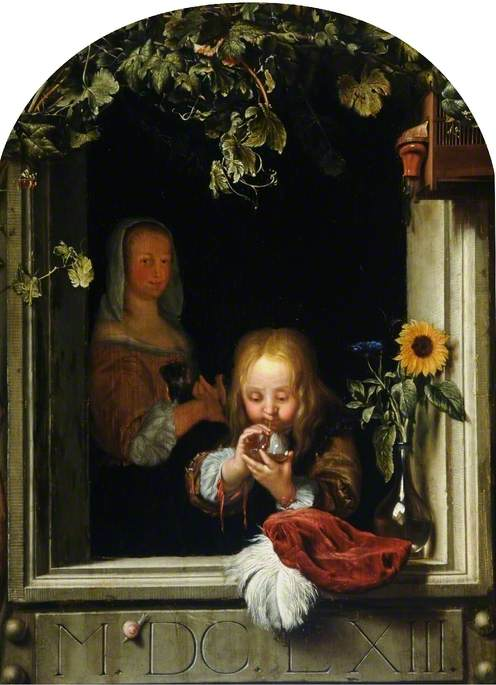
Boy Blowing Bubbles by Franz van Mieris the elder (1635-1681)
(C) Cannon Hall Museum
However, these resplendent flowers rose to favour again in the late 19th century when the Aesthetic Movement led by fashionable figures in the art and literary world popularised the sunflower as one of their main design motifs, believing it to signify lasting happiness and adoration – key principles of aestheticism. The movement led by Dante Gabriel Rossetti and James McNeill Whistler, a close associate of Oscar Wilde, fervently believed that art should not convey morals or messages but should appeal to the senses. “Art for art’s sake!” was their mantra. The yellow of the sunflower was once a colour reviled as a symbol of cowardice and shame, indicative of a sallow complexion and disease. The Aesthetic Movement artists were drawn to subversion of the overriding Victorian culture and to all things unorthodox. Oscar Wilde commented that the sunflower was akin to a gaudy lion and its adoption as the movement’s floral emblem was secured.
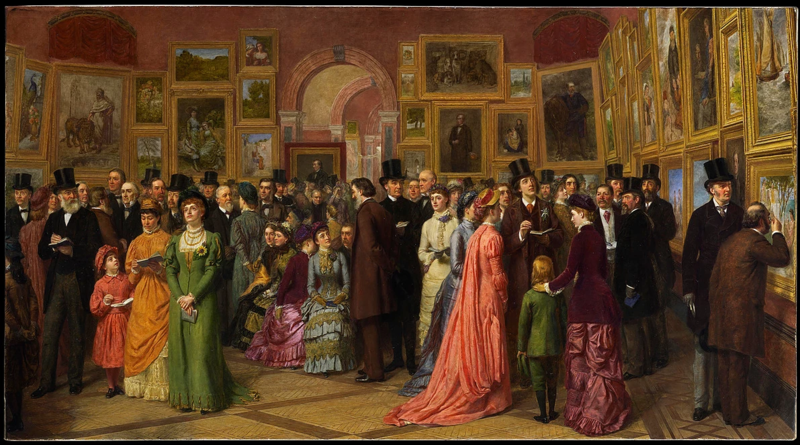
A Private View at the Royal Academy (1881) William Powell Frith. Private collection, image Courtesy of WikiCommons
A prominent painting of the Aesthetic Movement – A Private Viewing at the Royal Academy by William Powell Frith – shows Oscar Wilde surrounded by women in flowing robes, one wearing a sunflower, here symbolising female longing and hopeless love.
Sunflowers also adorn the andirons and grate of the Peacock Room, created by James McNeill Whistler and Thomas Jeckyll. These iconic items originally decorated the fireplace in the home of shipping magnate Frederick Richards Leyland and sat amongst a multitude of other decorative items symbolising the preferences and tastes of the Aesthetic Movement, including a De Morgan fireplace. The whole room has now transferred to the Freer Museum in the USA.
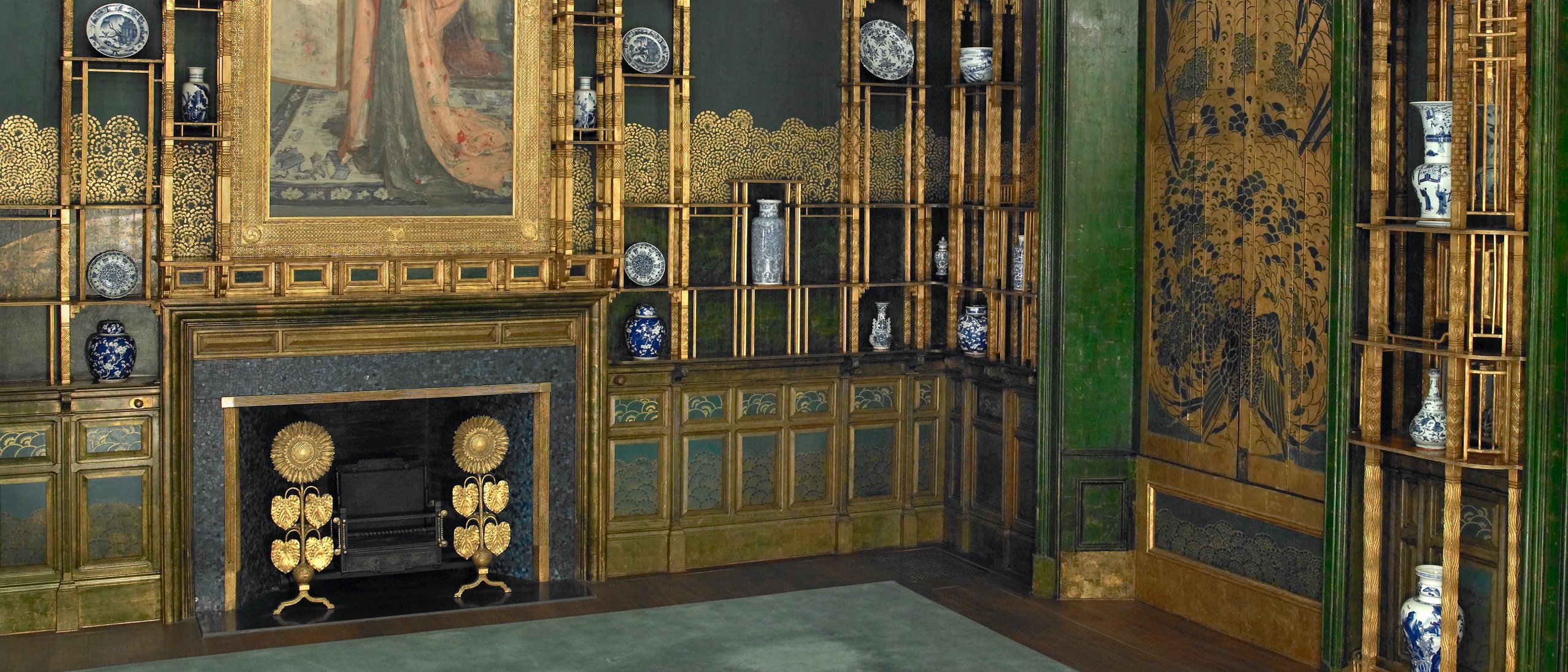
The Infamous Peacock Room by Jeckyll and Whistler
Jeckyll, a respected designer from Norfolk, popularised the sunflower motif in other examples of his work too. It was thought that the flat profile of the flower head would lend itself to metal casting techniques, whereas in fact, sunflower seed heads are incredibly intricate, consisting of clockwise and anti-clockwise spirals of individual seeds. Careful observation of Jeckyll’s work shows just how accurately he mastered the complexity of these patterns which naturally conform to strict mathematical pattern.
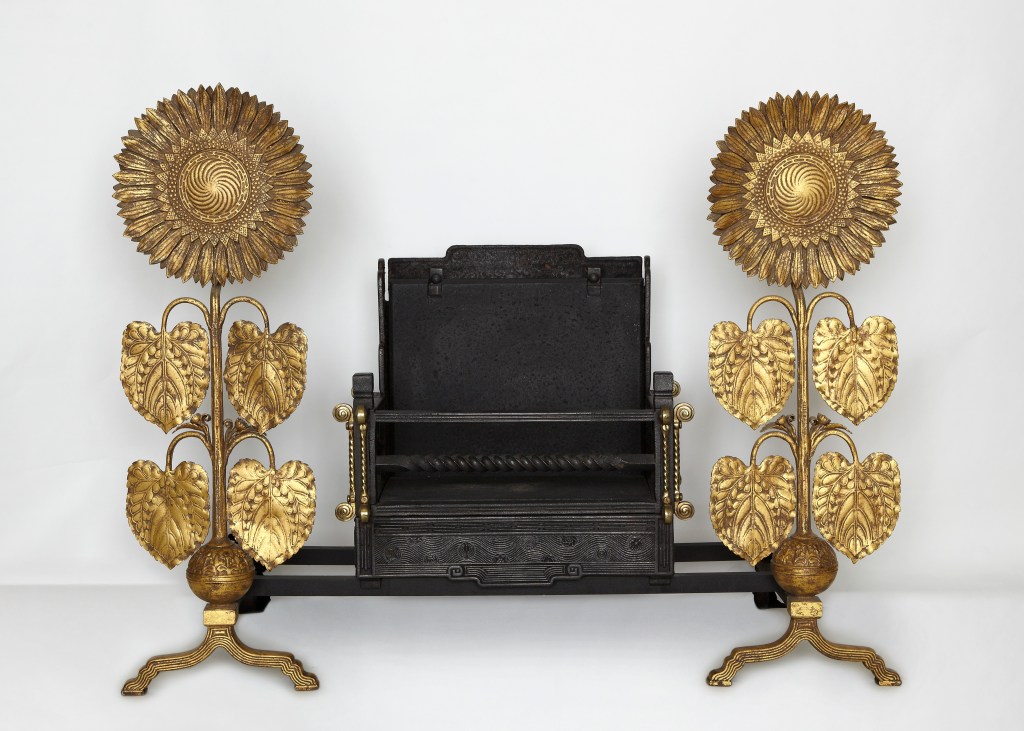
Sunflower andirons; designer: Thomas Jeckyll (1827–1881), manufacturer: Barnard, Bishop, & Barnards; England, Norwich, ca. 1878–84; iron with gilding; Purchase, Freer Study Collection, FSC-M-66a–b
The Aesthetic Movement adopted an abundance of flora and fauna as representations of their ideas and ideals, but the magnificent sunflower is surely the most striking of all the icons that remind us of their adoration of all things beautiful.






